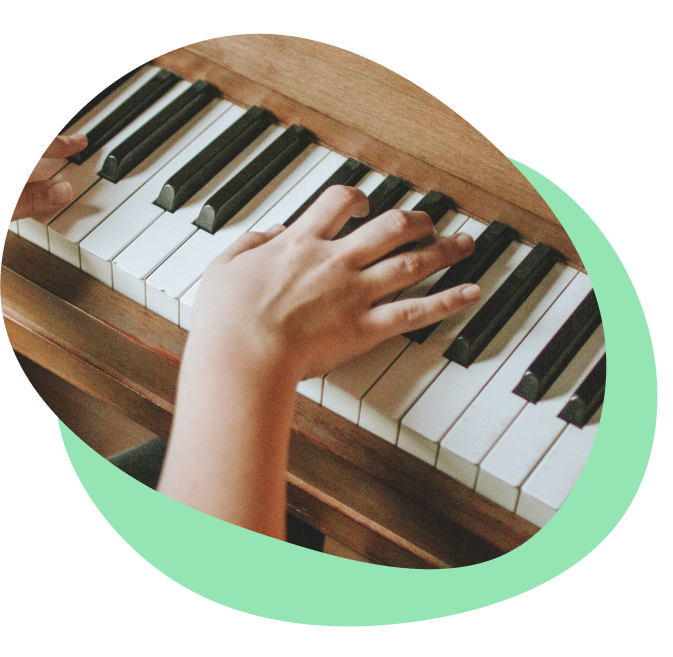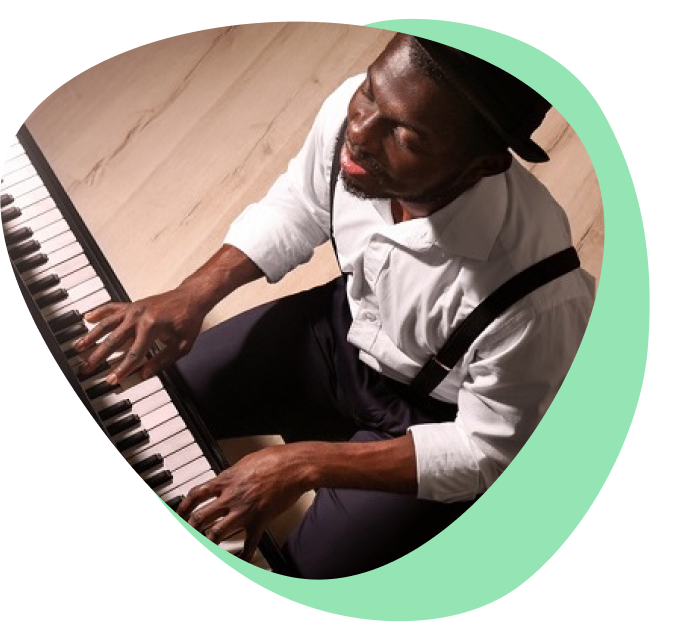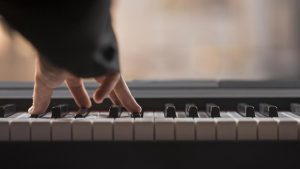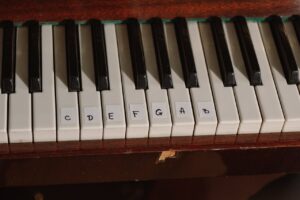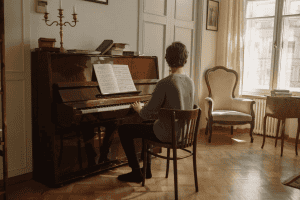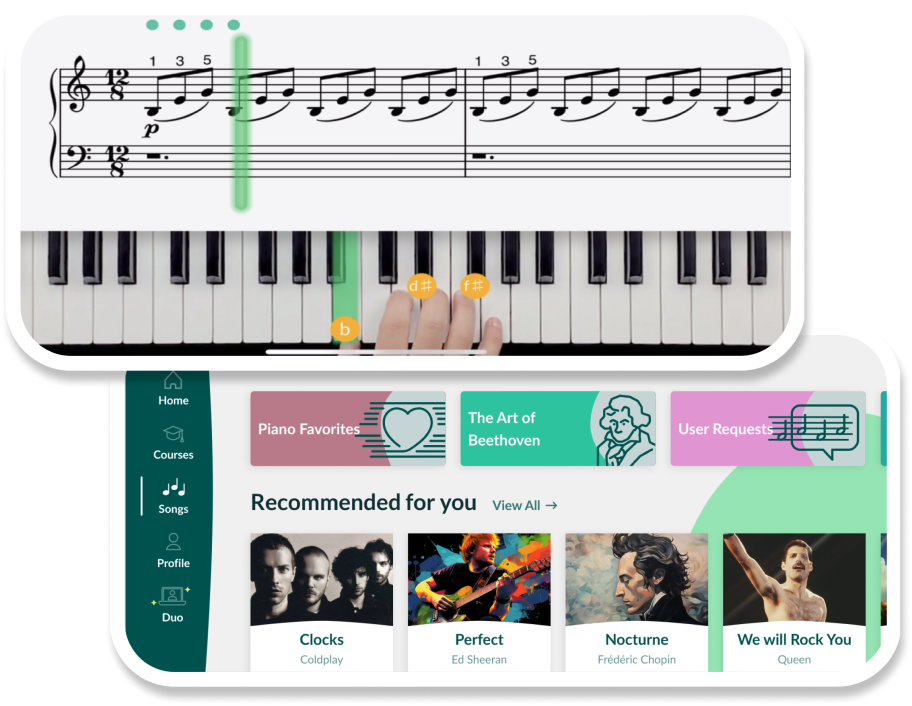What are arpeggios? Arpeggios in music are one of the most useful things you can learn on piano. Whether you are just starting out or are a more advanced pianist, arpeggios are a fundamental skill that should be practiced regularly as they appear everywhere in music. In this guide we will take a look at why arpeggios are important, how to play arpeggios on piano and how to practice them . Let’s get started.
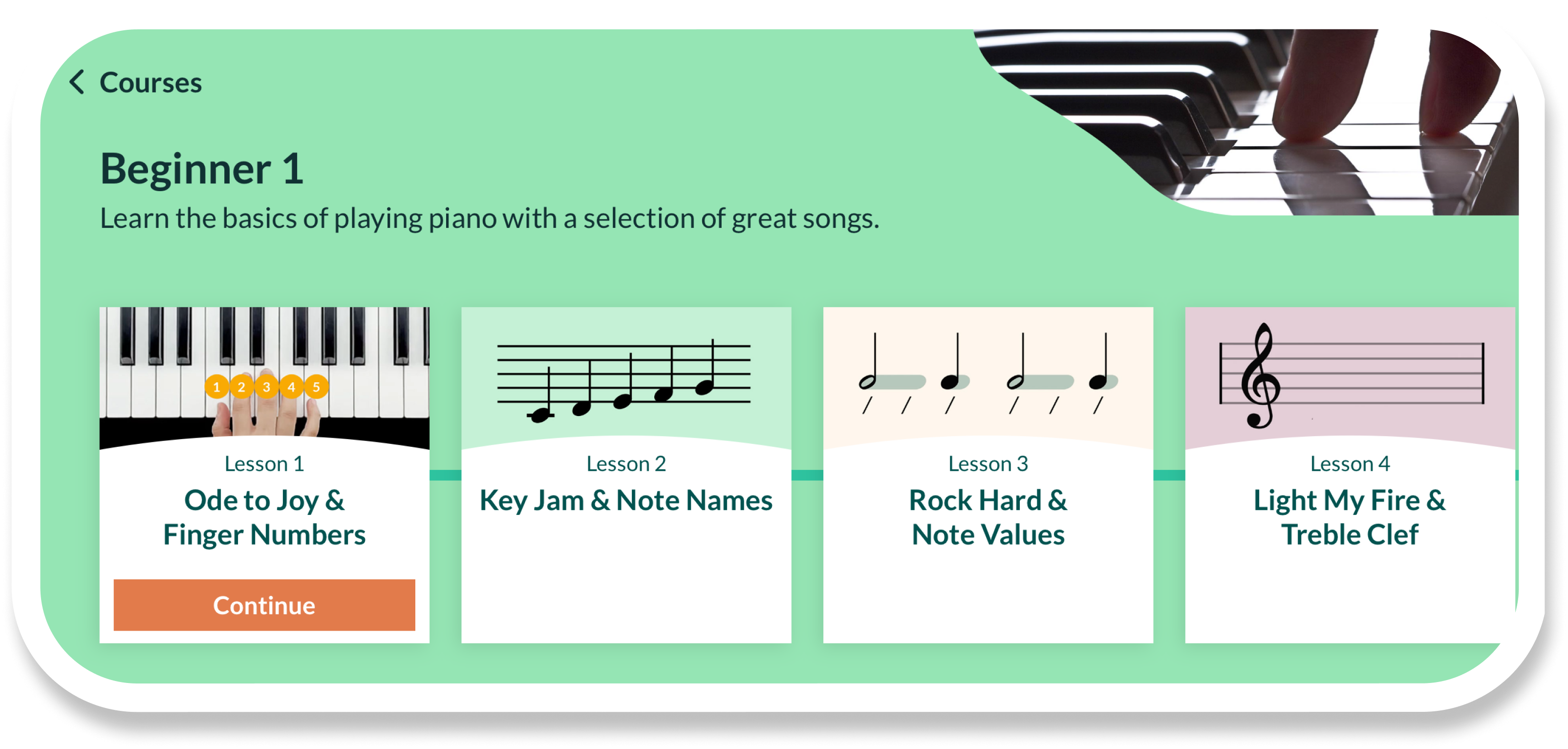
What is an arpeggio?
The term arpeggio has its roots In the Italian word arpeggiare, the arpeggio definition means to play on the harp. A harpist plucks the strings one by one to play individual notes and chords. You can play arpeggios on a host of musical instruments, including the guitar, synthesizers and of course the piano.
Scales and arpeggios in music are similar concepts but have some important differences. An arpeggio is a type of broken chord. With arpeggios you play the piano notes of a chord either ascending or descending pattern. Arpeggios tend to be in thirds following a chord whereas piano scales tend to be stepwise movement within a specific key.
See how this chord has been broken up into single notes to form an arpeggio:
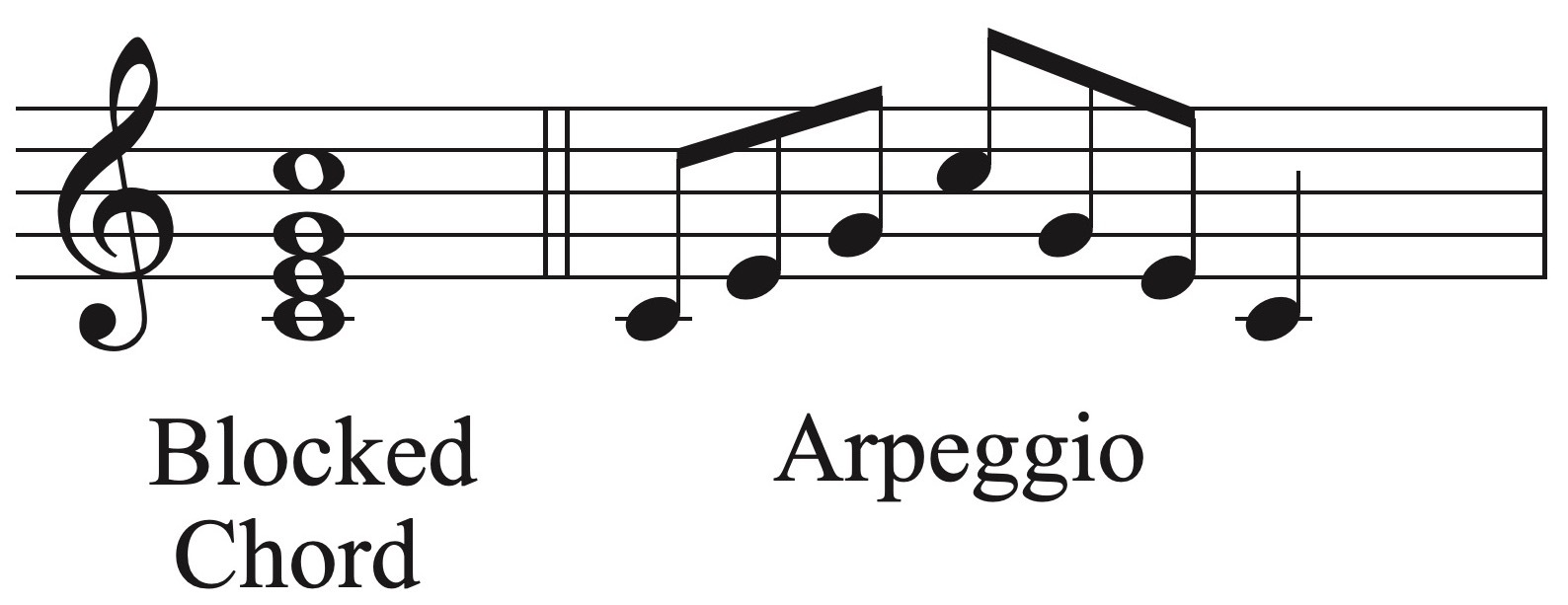
Arpeggios are a great way to convey chords and chord progressions with more rhythmic and textural variation than standard block chords. To gain a better understanding of what an arpeggio is and how it sounds, take a look at how Beethoven’s “Moonlight Sonata” uses an arpeggiated pattern to create beautiful movement and harmony.
How to tell the difference between arpeggios, chords, and scales
Scales, arpeggios and piano chords are all common devices you will encounter in music. Here is a handy table to help you define the difference between these core musical elements. Understanding the different common functions of these devices will help you identify them when they are used in music, allowing you to implement them in your compositions and improvisations with more confidence.
| Chords | Arpeggios | Scales | |
| Definition | Multiple notes played simultaneously | The notes of a chord played individually in sequence | A series of single stepwise notes usually in alphabetical order |
| Example (C major) | C E G (played together) | C E G (played in sequence) | C D E F G A B C (played in sequence) |
| Primary Purpose | Harmony | Harmony | Melody |
| Usual use in music | Provide harmonic support | Provide harmonic support with varied texture | Forming the framework for melody |
Why arpeggios matter in piano
Arpeggios are more than just something to practice; they are a great tool for any pianist.
- Improved dexterity and coordination – Learning arpeggios gives you improved finger independence and control. Arpeggios appear everywhere in music so having them feel natural under your fingers will make learning songs easier.
- Musicality – Arpeggios are used in music to create harmony. They add texture and movement, whether you’re playing classical, jazz or pop you will find them.
Versatility – Mastering arpeggios opens up a world of possibilities in your playing. You’ll be able to add complexity to your performances and improvisation and impress people with your soloing skills. - Common patterns – Many famous pieces feature arpeggios. They add emotional depth and more interesting movement. This can be seen in songs like “River Flows In You” by Yiruma.
Reading arpeggios in sheet music
Arpeggios might seem daunting at first glance especially when you encounter them in piano sheet music. However, with a bit of knowledge and practice, reading arpeggio piano notes becomes as intuitive as reading a book.
Arpeggios are typically notated two different ways in piano music:
- Notated with piano rhythms to show specific notes on specific beats and note durations:
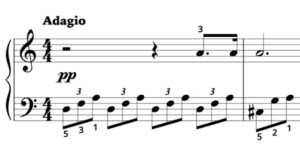
- As chords with a wavy vertical line in front of them, indicating that the notes should be played in quick succession. Arrows can also be used to indicate the direction in which the chord should be arpeggiated.

How arpeggios relate to triads
The most common type of chord that beginning pianists learn is called the triad. The triad is simply a three note chord. For example, if the root note is C and the middle note is E, then the chord will be C major. As we have already seen you can arpeggiate any triad. Let’s look at how we can transform some simple triads into arpeggios to use in our playing.
Major arpeggios
A major arpeggio is built from a major triad (root, major third, perfect fifth). For example, the C Major arpeggio is made up of the notes C, E and G. Play the notes C-E-G in ascending or descending order. This arpeggio gives a bright, stable and consonant sound.

Minor arpeggios
A minor arpeggio is derived from a minor triad (root, minor third, perfect fifth). For example, the C Minor arpeggio consists of the notes C, Eb, and G. Play the notes C-Eb-G in ascending or descending order. This arpeggio has a more somber, melancholic feel compared to the major arpeggio.

More arpeggios
When exploring triads and arpeggios you will find that there are more types than just major and minor. As you explore piano playing further you will find that there are diminished and augmented arpeggios and many more. The same principles we are about to explore apply to these chord types too. Be sure to keep an eye out for them when playing your favorite songs!
How to play an arpeggio
To play the C Major arpeggio you play the C-E-G triad in ascending and descending order. You can do this by playing C-E-G-E-C. This is the most basic form of an Arpeggio, called a one-octave, three-note Arpeggio.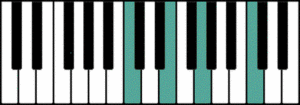
The basic one-octave arpeggio
This is the simplest arpeggio pattern, consisting of a basic triad. Here’s how to practice it:
- Right hand: Play the notes of the chord in an ascending or descending order. For example, a C Major arpeggio (C-E-G) would be played as C, E, G, C in ascending order.

- Left hand: Play the same notes but start with your pinky (5), then move to your middle finger (3), and finish with your thumb (1).

Extending the arpeggio
When you are comfortable you can play arpeggios with both hands at the same time and expand the arpeggio over as many octaves as you feel like. This will improve your coordination and dexterity.
Be sure to cross over with a good technique using a fluid motion when pivoting over to your thumb.
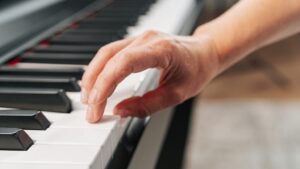
For example:
- Right hand fingerings (ascending): 1, 2, 3, -cross over- 1, 2, 3, 5
- Left hand fingerings (ascending): 5, 3, 2, 1, – cross over – 3, 2, 1
You can see how this corresponds to the notation and fingering directions here:

Arpeggio and inversions
To gain more dexterity and confidence with any arpeggio you can practice starting on a note of that chord the arpeggio outlines. This is similar to how chord inversions work. This gives you more freedom with your use of arpeggios and allows for smoother and more interesting voice leading and transitions between arpeggios. Be sure to follow the suggested fingerings and take care to cross over smoothly for good technique.

Practice with real songs
The best way to put these tips into practice when you learn to play piano is to practice with sheet music. Take a look at these songs from the Skoove app. These and many other songs will help you get to grips with these arpeggios in real time and put your newfound arpeggiation skills and classic patterns into practice. Take your time to see where these arpeggios appear as they can form both the melody or accompaniment of the piece. Happy practicing!
Author of this blog post:
Matthew Dickman

With over a decade of experience in music education Matthew holds a BA in Music from Paul McCartney’s LIPA and an MA in Composition from the University of Salford. Mathew has developed a distinctive compositional voice and approach to music theory education through his research and work in the music industry. Matthew’s writing for Skoove combines experience from orchestral and media composition, and as a gigging jazz musician, to create a wholistic and accessible pedagogy for musicians of any level. Away from music, he enjoys reading and exploring nature to expand his horizons and knowledge contributing to his holistic teaching style.




